Yoshimi Kato
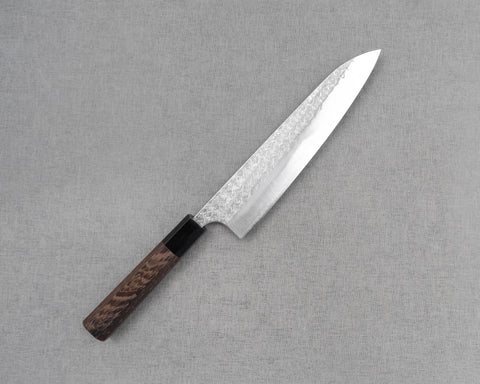
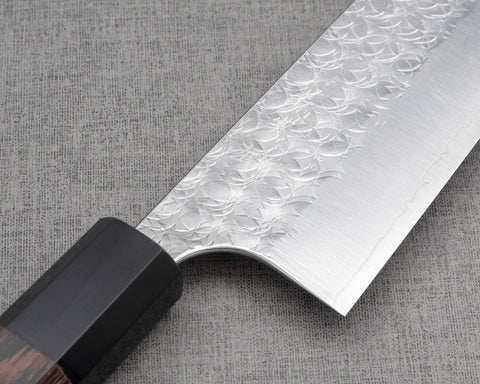
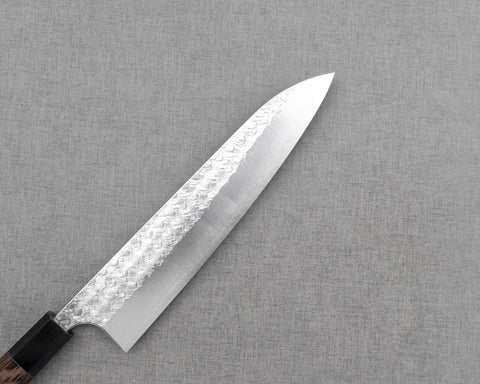
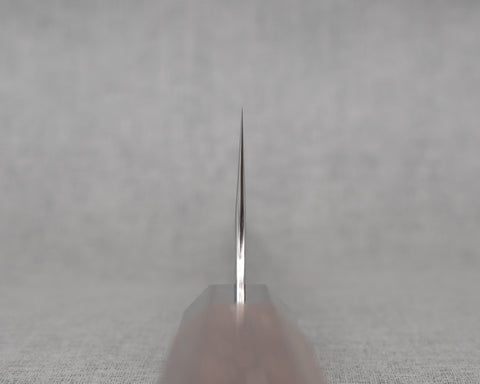
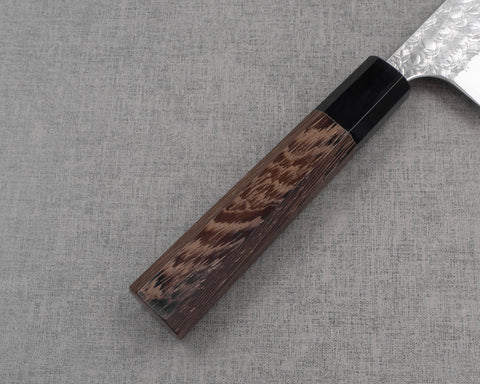
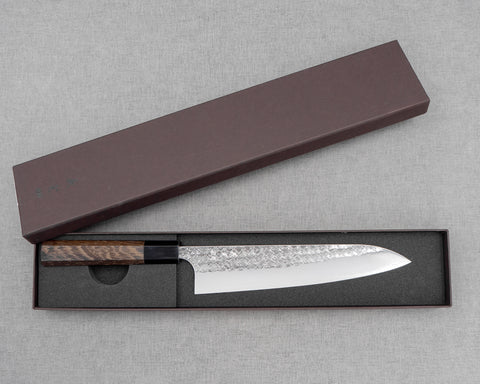
Yoshimi Kato R2/SG2 "Minamo" Tsuchime 210mm Gyuto
目前沒有提供取貨服務
The newly released "Minamo" series is expertly crafted to meet the demands of even the most discerning chefs. The blade features an iconic "Ninja Star-like" Tsuchime pattern, which not only enhances its visual appeal but also reduces friction and enhances its cutting performance. Its perfect balance of lightweight and strength make it an excellent choice for slicing, dicing, mincing, and chopping a variety of ingredients. With its razor sharp edge and impressive performance, it's sure to become an invaluable asset in any kitchen.
Spec:
- Origin (Made in): Echizen, Fukui Prefecture, Japan
- Brand: Yoshimi Kato
- Craftsman: Mr. Yoshimi Kato
- Knife Type: Gyuto
- Blade
- Construction: San Mai
- Grind: Double-edged Blade (50/50 Grind)
- Hagane (Core Steel): R2/SG2
- Jigane (Cladding): Stainless Steel
- Hardness: 63 HRC
- Hand-forged, hand-ground, hand-sharpened
- Blade Finishes: Tsuchime (Hammered)
- Blade Length: 210mm (8.3")
- Blade Height (at heel): 46mm
- Spine Thickness
- Above heel: 1.9mm
- Middle: 1.9mm
- Handle
- Shape: Hachikaku (Octagonal)
- Material: Wenge
- Kuchiwa: Black Buffalo Horn
- Length: 133mm
- Overall Length: 362mm
- Weight: 151g (5.33oz)
-
Handle Chiseled Mark: In Japanese Kanji "Yoshimi Echizen" (義実 越前)
About Kato Yoshimi 加藤 義実
Yoshimi Kato (aka. Yoshimi Katou) is a renowned blacksmith in Echizen, Fukui Prefecture, and the 3rd generation Kato. Head of Kato Uchihamono, formerly known as Kintaro, Mr. Kato has apprenticed under his father - 2nd generation blacksmith - Hiroshi Kato for many years before taking over the family business. Mr. Kato is a master of heat-treating high-end steels such as SG2 and Aogami Super. His hand-forged Damascus is mesmerizing and his tsuchime finish aesthetically pleasing. Kato knives have a great reputation for being the finest example of Echizen craftsmanship.
Care:
Wash and dry with a soft sponge, and safely store after use. Avoid cutting into bones, frozen foods, hard fruit pits.
Cutting Surface:
Recommended cutting surface: wood, rubberized boards and high-end composites, and quality plastics such as polyethene make acceptable cutting surfaces, and will help protect and prolong knife’s edge. AVOID glass, metal, countertops, and other rigid, non-forgiving surfaces.
Sharpening:
We recommend sharpening all quality Japanese knives on whetstones, as we believe they yield the best results for your knives.
